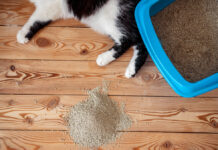Is your furry friend doing a weird moonwalk? If you’ve noticed your dog shuffles back feet while walking, you might be wondering what’s up with this strange behavior. As a pet parent, it’s natural to be concerned when your four-legged companion shows unusual walking patterns. Let’s dive into this common issue and explore what you can do about it.
Understanding Why Dogs Drag Their Back Feet
When your dog shuffles back feet, it could signal various underlying issues. As explained by Pet like boss, this behavior isn’t always cause for panic, but it definitely deserves attention. The proprioception – your dog’s awareness of their body position – might be affected, leading to this unusual gait.
Common Causes of Back Feet Shuffling
-
Neurological Issues
- Intervertebral disk disease
- Nerve compression
- Spinal cord problems
-
Physical Conditions
- Hip dysplasia
- Arthritis
- Muscle weakness
- Joint problems
-
Age-Related Factors
- Senior dog mobility issues
- Natural wear and tear
- Reduced muscle strength
Signs to Watch For
When your dog shuffles back feet, pay attention to these additional symptoms:
- Difficulty standing up
- Reluctance to exercise
- Visible pain or discomfort
- Changes in bathroom habits
- Decreased coordination
Treatment Options and Solutions
Immediate Actions
-
Veterinary Consultation
- Schedule a check-up
- Get proper diagnosis
- Discuss treatment options
-
Environmental Modifications
- Non-slip mats
- Carpet runners
- Ramps for elevation changes
Long-term Solutions
-
Physical Therapy
- Targeted exercises
- Massage
- Hydrotherapy
-
Medical Treatments
- Anti-inflammatory medications
- Joint supplements
- Pain management
Prevention Tips
To help prevent your dog shuffles back feet condition:
-
Regular Exercise
- Appropriate activity levels
- Low-impact exercises
- Swimming when possible
-
Weight Management
- Proper diet
- Portion control
- Regular weigh-ins
-
Regular Check-ups
- Annual vet visits
- Early intervention
- Preventive care
For more comprehensive information about dog health and care, check out our dog care guides.
When to Seek Professional Help
If your dog’s back feet shuffling persists or worsens, don’t wait to seek help. Contact your vet immediately if you notice:
- Sudden onset of shuffling
- Accompanying pain or distress
- Loss of bladder control
- Difficulty standing or walking
Home Care Tips
Creating a Safe Environment
-
Floor Surfaces
- Add non-slip mats
- Remove slippery rugs
- Install carpet runners
-
Support Systems
- Ramps for stairs
- Elevated food bowls
- Supportive bedding
Exercise Modifications
-
Gentle Activities
- Short walks
- Light play sessions
- Controlled movement
-
Strengthening Exercises
- Targeted muscle work
- Balance training
- Supervised therapy
Alternative Therapies
Consider these complementary treatments:
-
Acupuncture
- Pain relief
- Improved mobility
- Nervous system support
-
Massage
- Muscle relaxation
- Circulation improvement
- Pain management
-
Hydrotherapy
- Low-impact exercise
- Muscle strengthening
- Joint support
Diet and Supplements
Nutritional Support
-
Joint-Health Foods
- Omega-3 fatty acids
- Glucosamine-rich foods
- Anti-inflammatory ingredients
-
Supplements
- Joint supplements
- Vitamin combinations
- Natural remedies
Lifestyle Adjustments
Daily Routine Changes
-
Activity Modifications
- Shorter walks
- More frequent breaks
- Gentle play sessions
-
Rest Periods
- Adequate sleep
- Comfortable resting areas
- Quiet time
Moving Forward
Living with a dog who shuffles their back feet requires patience and dedication. Remember that each case is unique, and what works for one dog might not work for another. Stay consistent with your chosen treatment plan and maintain open communication with your veterinary team.
Success Stories
Many dogs with back feet shuffling have shown improvement through:- Consistent therapy- Appropriate medical treatment- Environmental modifications- Owner dedication
When you notice your dog shuffles back feet, it’s important to take action while maintaining a positive attitude. With proper care, many dogs can improve their condition or learn to manage it effectively. Remember to:
- Consult with professionals
- Make necessary environmental changes
- Stay consistent with treatment
- Monitor progress
- Provide lots of love and support
By understanding the causes and implementing appropriate solutions, you can help your furry friend maintain a good quality of life despite this challenge. For more detailed information about dog health and care, visit Pet like boss for expert advice and guidance.












